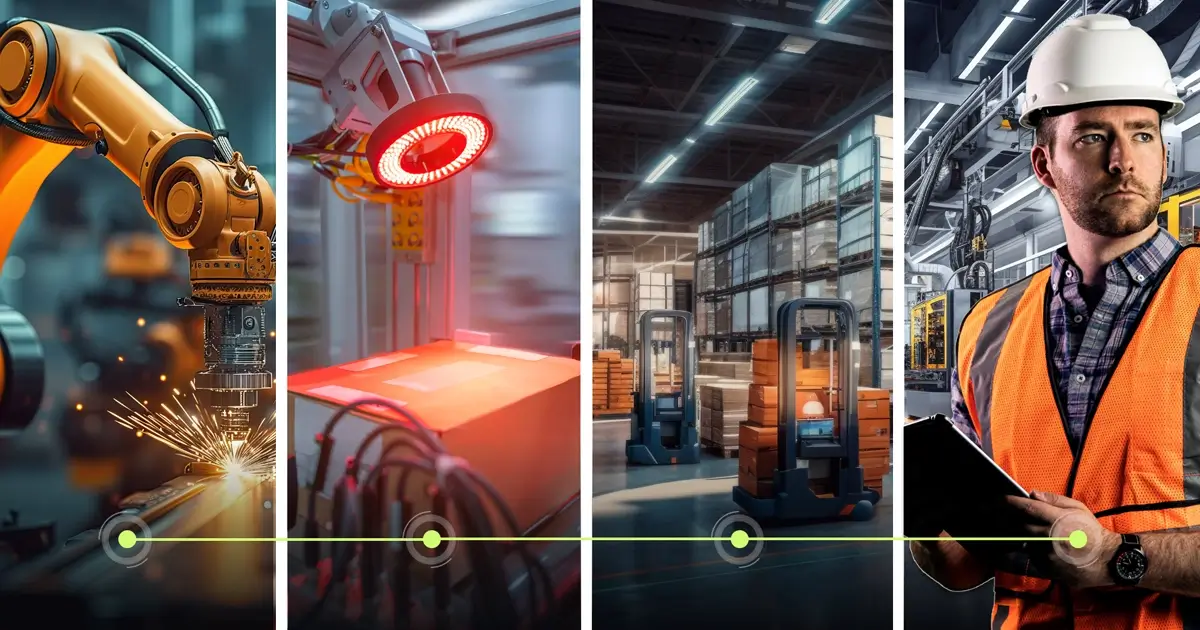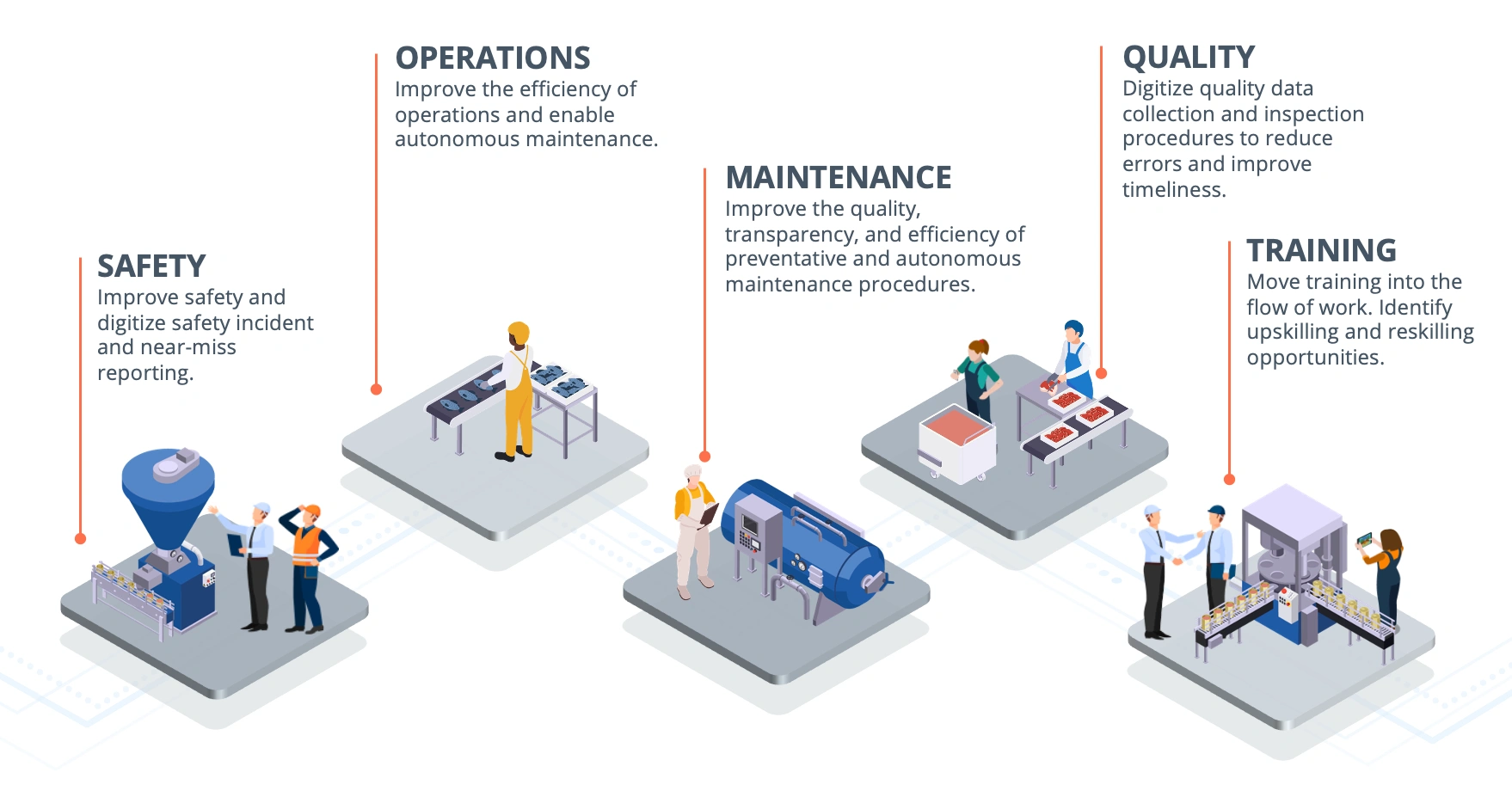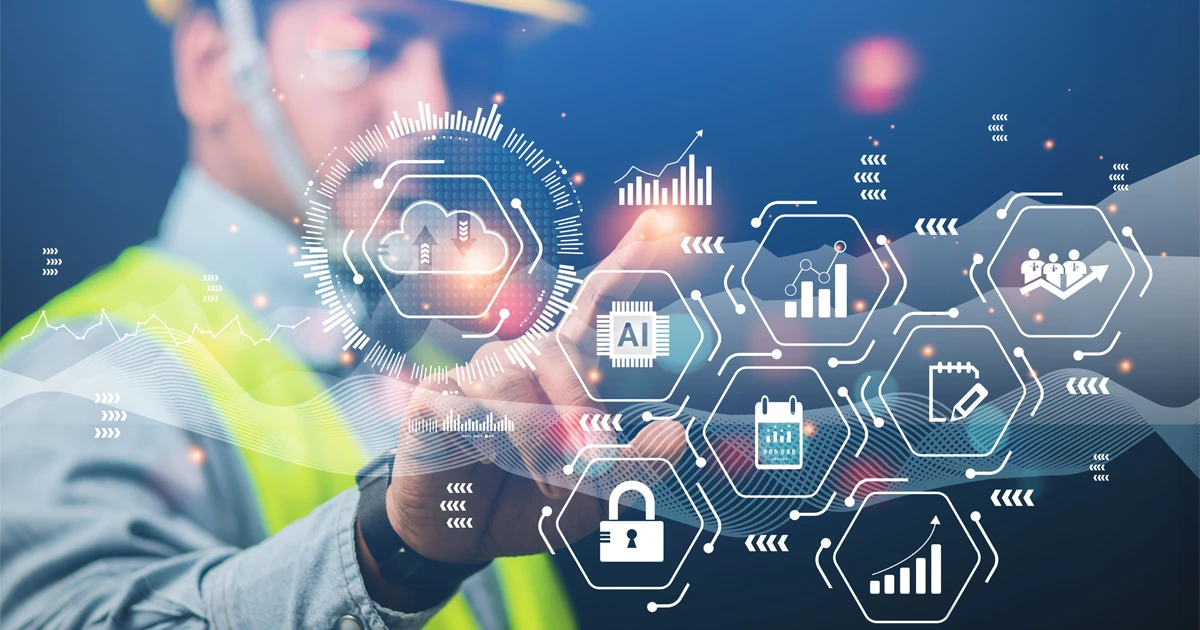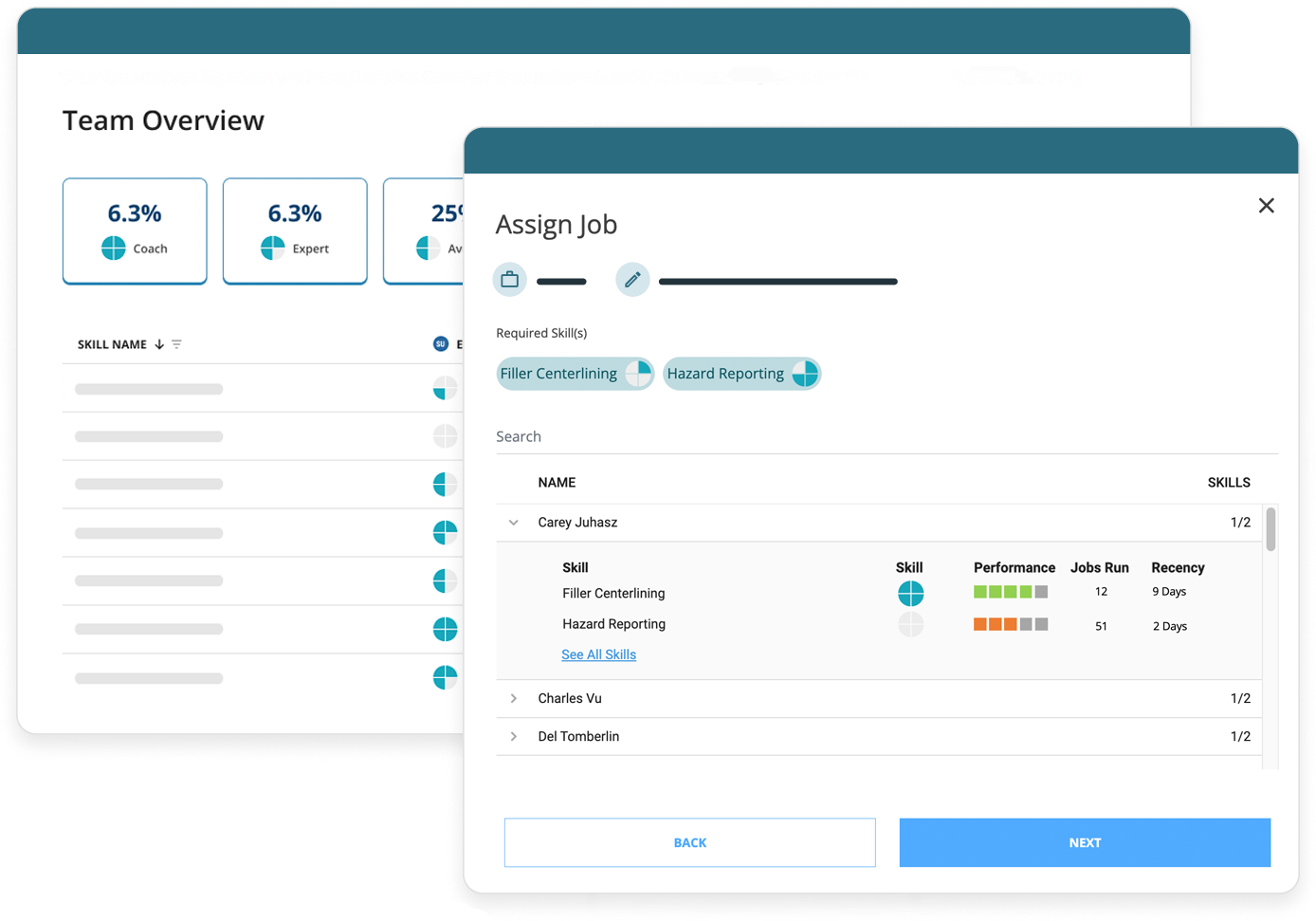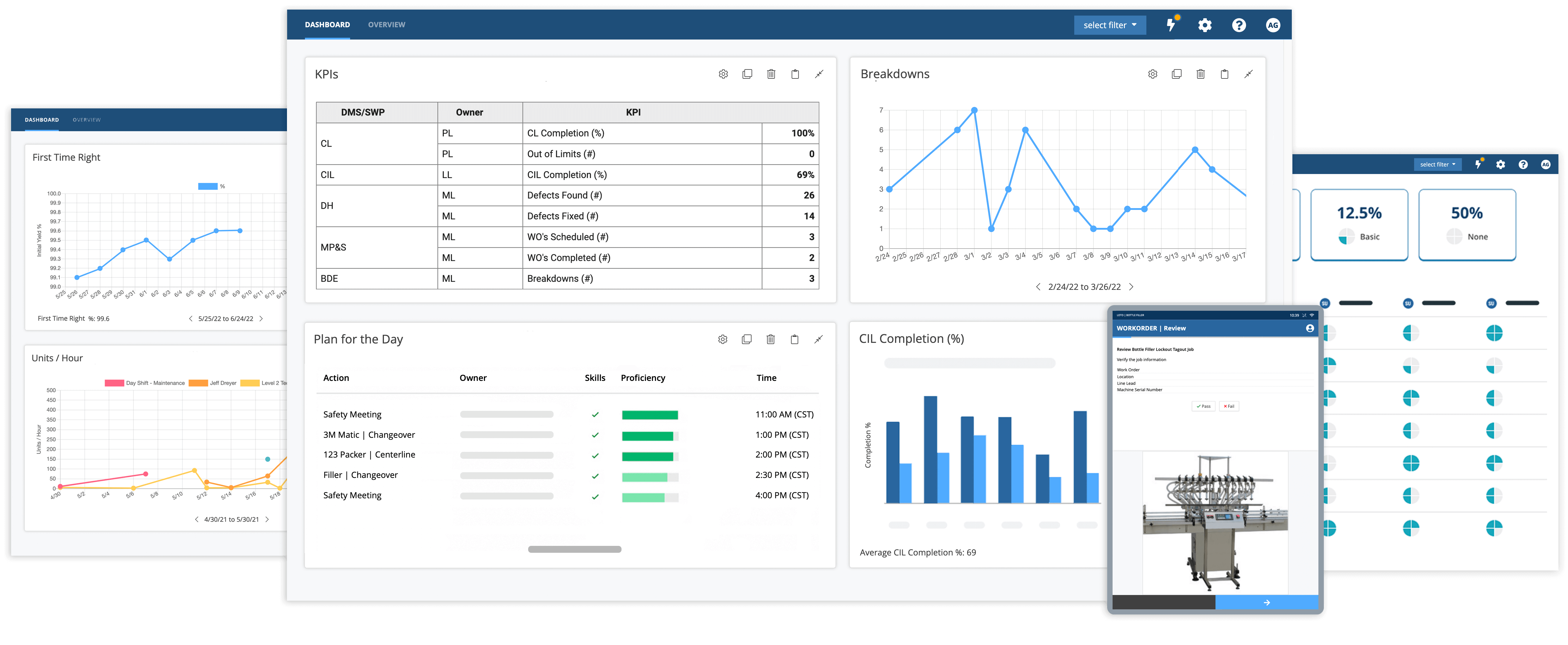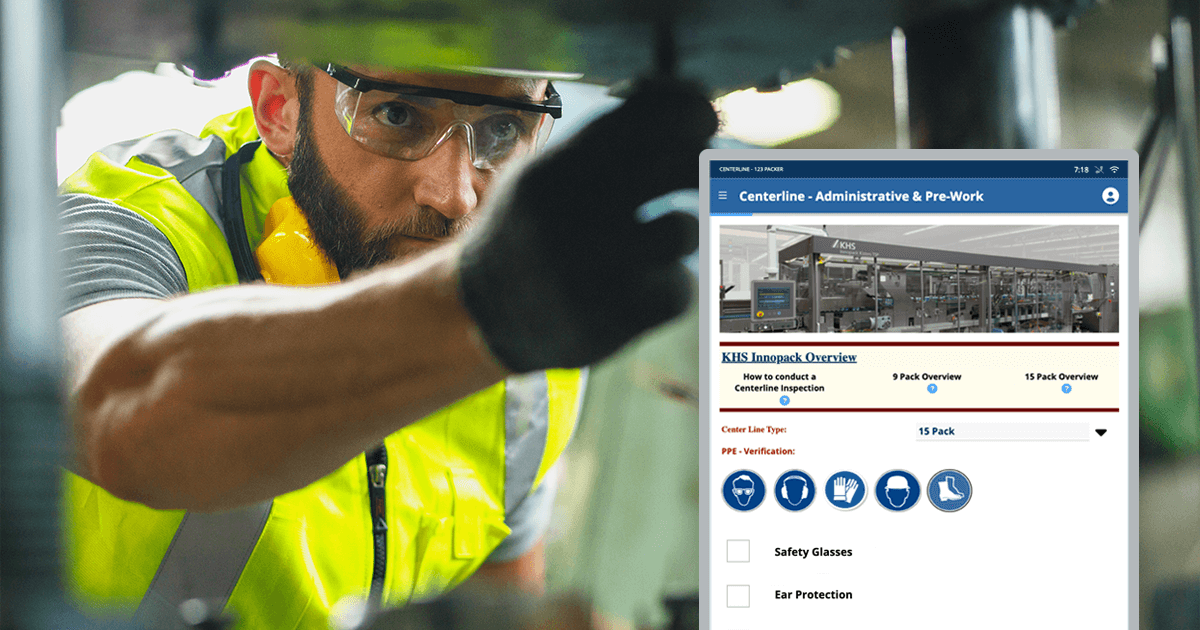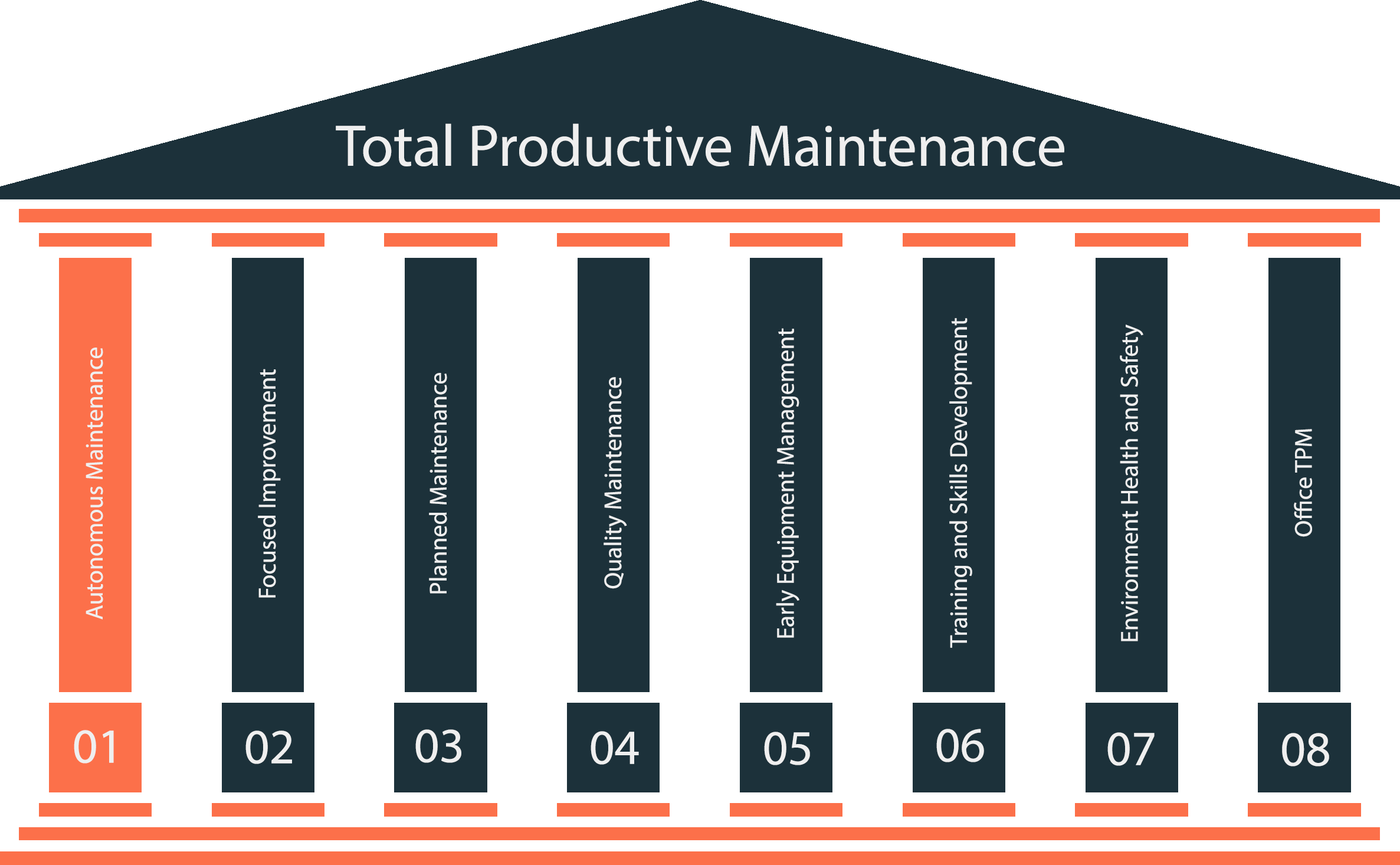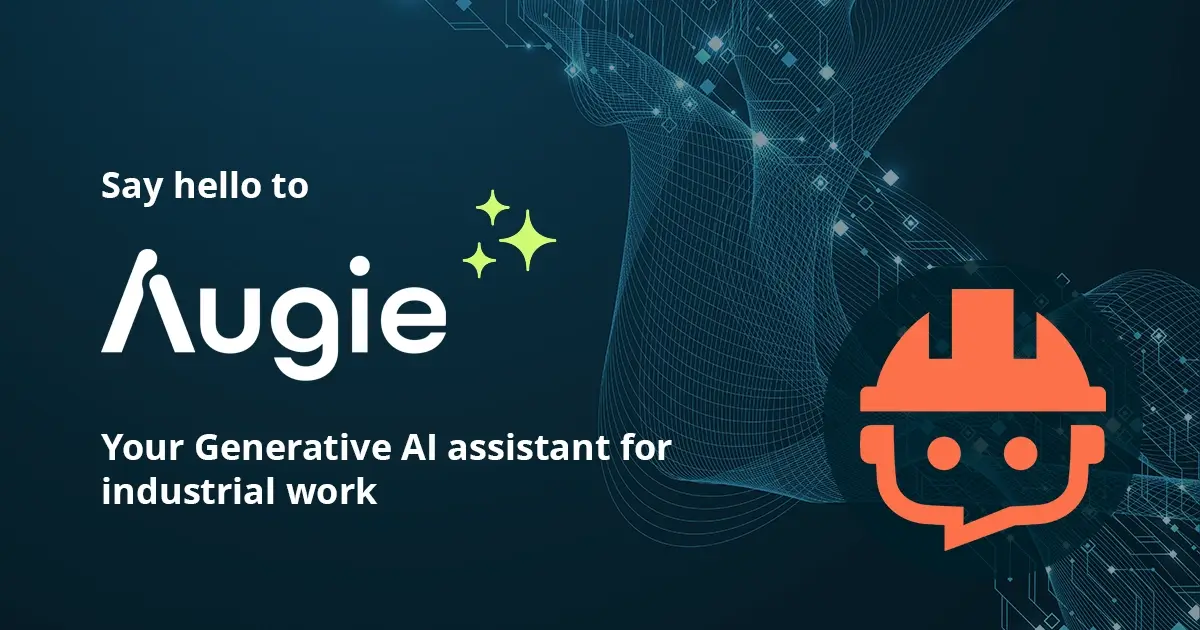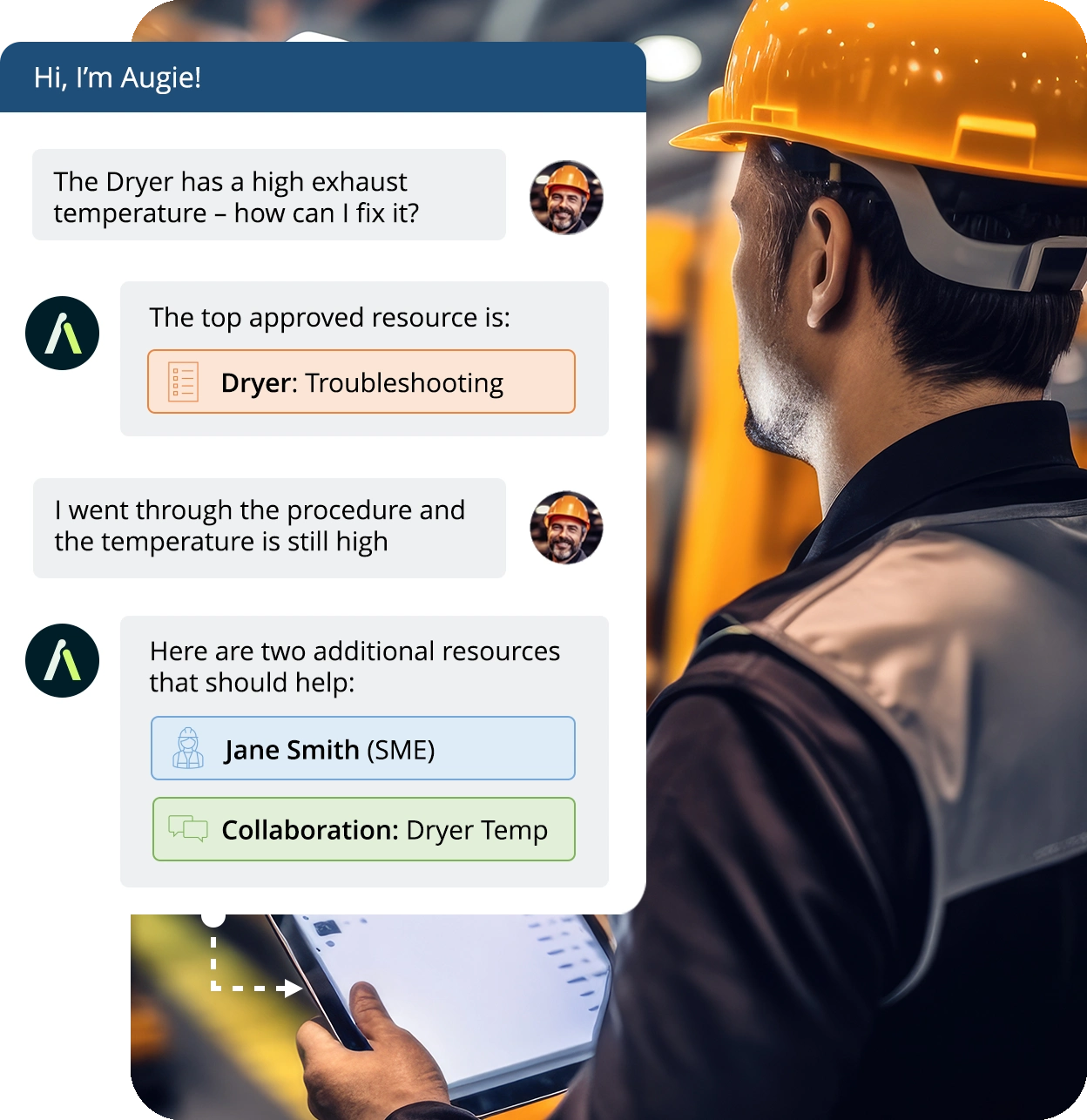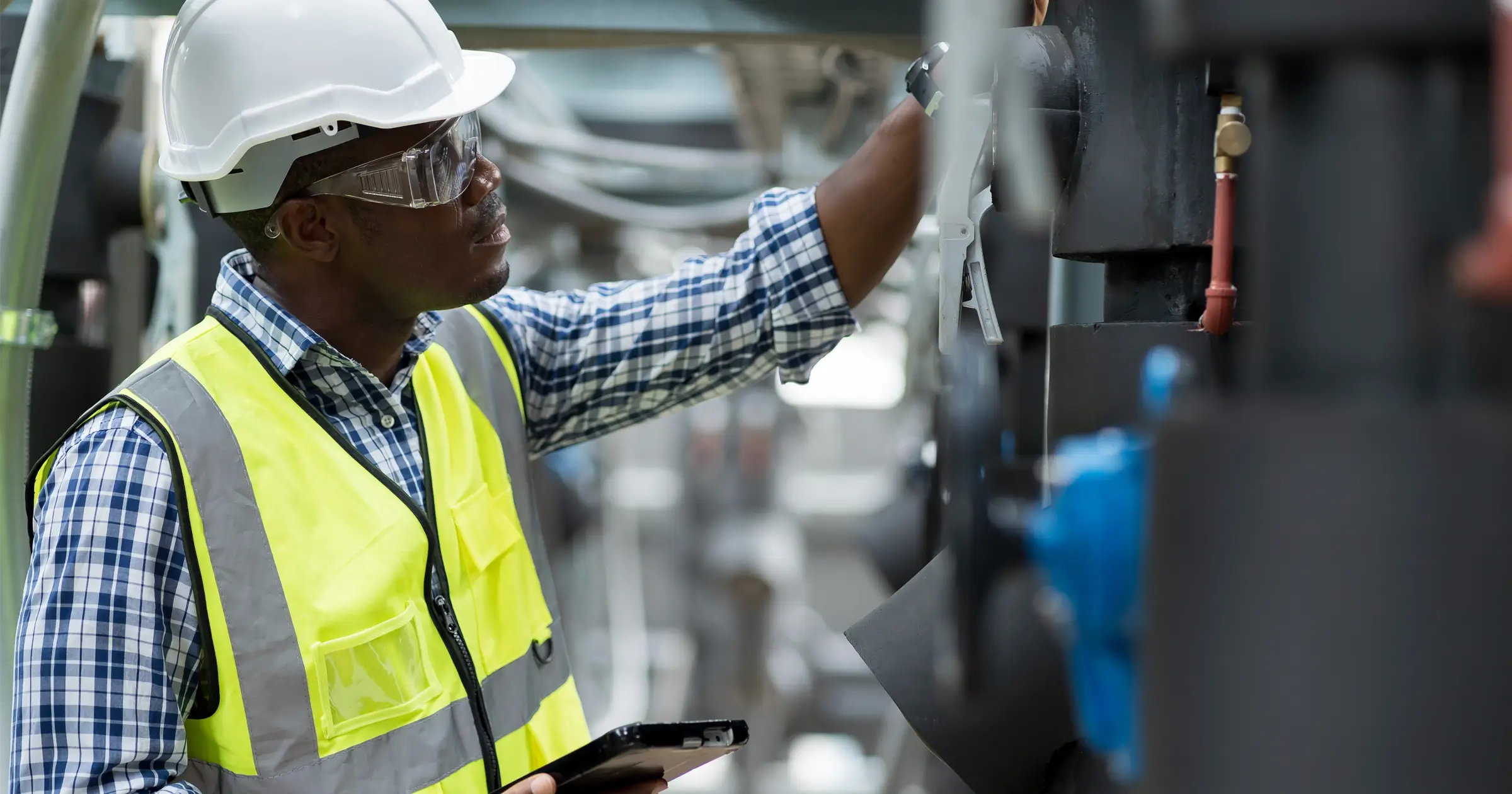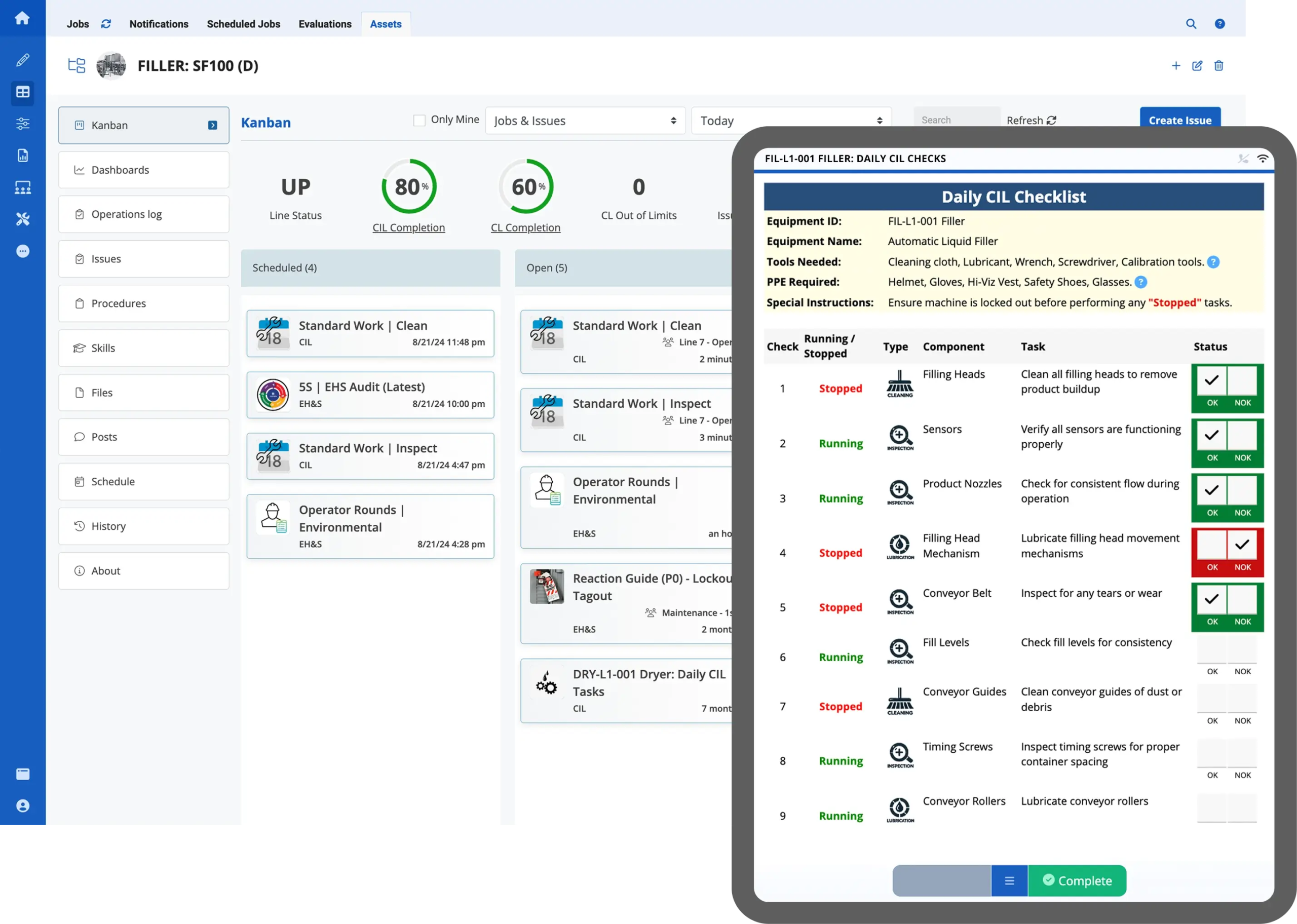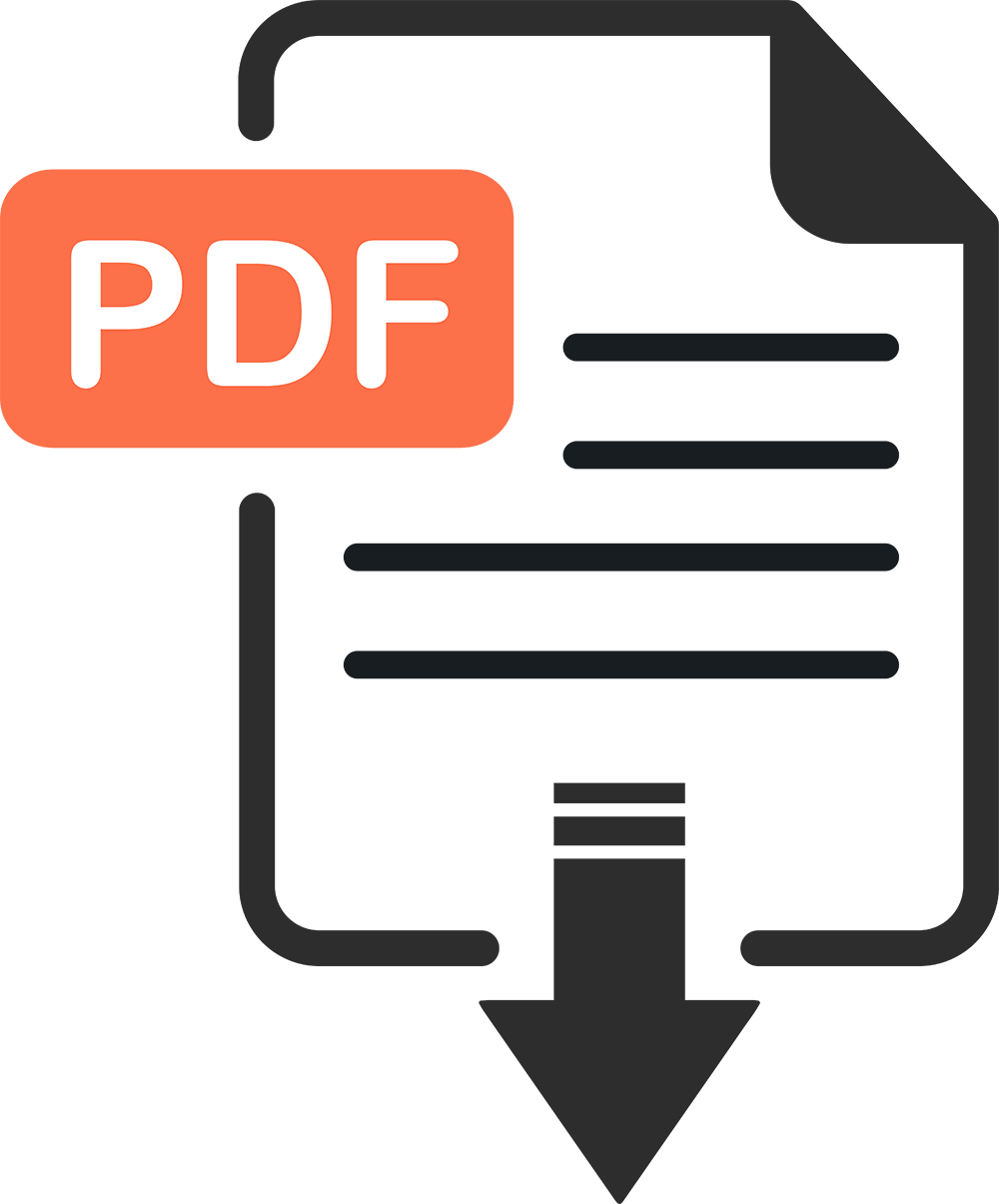The evolution of AI in manufacturing has seen tremendous growth over the past few decades, now becoming more adaptive and collaborative, and being used to augment and directly support frontline workers.
The evolution of artificial intelligence and machine learning technologies in manufacturing has seen tremendous growth over the past few decades, with astounding leaps in technology and industry-wide transformations.
Dating back to the 1960’s, manufacturers started using AI in robotics and basic automation. This early usage focused on automating manual, highly repetitive human tasks such as assembly, parts handling, and sorting, allowing for higher levels of production and efficiency.
Over time, this evolved with AI-enabled machine vision systems, which were used to automate visual inspections, allowing for better quality control and precision during production cycles. More recently, AI has been at the center of warehouse automation, as well as the Industrial Internet of Things (IIoT), where physical machines and equipment are embedded with sensors and other technology for the purpose of connecting and exchanging data, which is used in predictive analytics for machine health monitoring. Manufacturers can now glean valuable insights from data collected over time about optimizing their operations for maximum efficiency without sacrificing quality.
Despite the breath of applications that AI has in the industrial setting, there is a common thread across all of the above examples – AI has largely been used to automate highly repetitive or manual tasks, or perform functions designed to replace the human worker.
However, these examples laid the groundwork for the adoption of AI in manufacturing and for the use of AI technologies that augment and directly support frontline workers today.
Read below for more information on how the use of AI and GenAI is evolving in manufacturing, and being used to augment the human worker, transforming productivity and efficiency at a time when workforce optimization is needed most.
- Using AI to Augment, not Replace the Workers in our Factories
- Augmentir’s AI-First Journey
- The Future of AI in Manufacturing – The Journey Forward
Using AI to Augment, not Replace the Workers in our Factories
Today, AI technologies in manufacturing have evolved to encompass a diverse range of applications. According to Deloitte, 86% of surveyed manufacturing executives believe that AI-based factory solutions will be the primary drivers of competitiveness in the next five years. Robotics and automation have become more adaptive and collaborative, working alongside and augmenting human workers to streamline production processes and increase efficiency – rather than simply trying to replace them.
As computing power and algorithmic capabilities improved, AI in manufacturing has become more advanced and widespread. The emergence of Industry 4.0, characterized by the convergence of digital technologies, further accelerated AI’s role in manufacturing. By leveraging tools like connected worker solutions to gather frontline data, manufacturing organizations can now capitalize on AI’s extraordinary computing power to analyze that data and derive actionable insights, improved processes, and more.
Much like the industry has learned to optimize equipment from the 1.7 Petabytes of connected machine data that is being collected yearly, we are now able to optimize frontline work processes and people from highly granular connected worker data, with one major caveat: In order to leverage this incredibly noisy data, a system has to be designed with an AI-first strategy, where the streaming and processing of this data is intrinsic to the platform – not added as an afterthought.
The potential for AI to help augment the human worker is there, but why now?
Because for today’s manufacturers, time is not on your side.
The workforce crisis in manufacturing is accelerating, and at the forefront of the minds of Operations and HR leaders. Job quitting is up, tenure rates are down, and manufacturers struggle daily to find the skilled staff necessary to meet production and quality goals. The threat is huge – with significant impacts to safety, quality, and productivity.
AI-based connected worker solutions allow industrial companies to digitize and optimize processes that support frontline workers from “hire to retire”. These solutions leverage data from your connected workforce to optimize training investments and proactively support workers on the job, across a range of manufacturing use cases.
Furthermore, solutions that leverage Generative AI and proprietary fit-for-purpose, pre-trained Large Language Models (LLMs) can enhance operational efficiency, problem-solving, and decision-making for today’s less experienced frontline industrial workers. Generative AI assistants can leverage enterprise-wide data, provides instant access to relevant information, closes skills gaps with personalized support, offers insights into standard work and skills inventory, and identifies opportunities for continuous improvement.
Augmentir’s AI-First Journey
At Augmentir, since the beginning, we pioneered an AI-first approach toward manufacturing and connected frontline worker support.
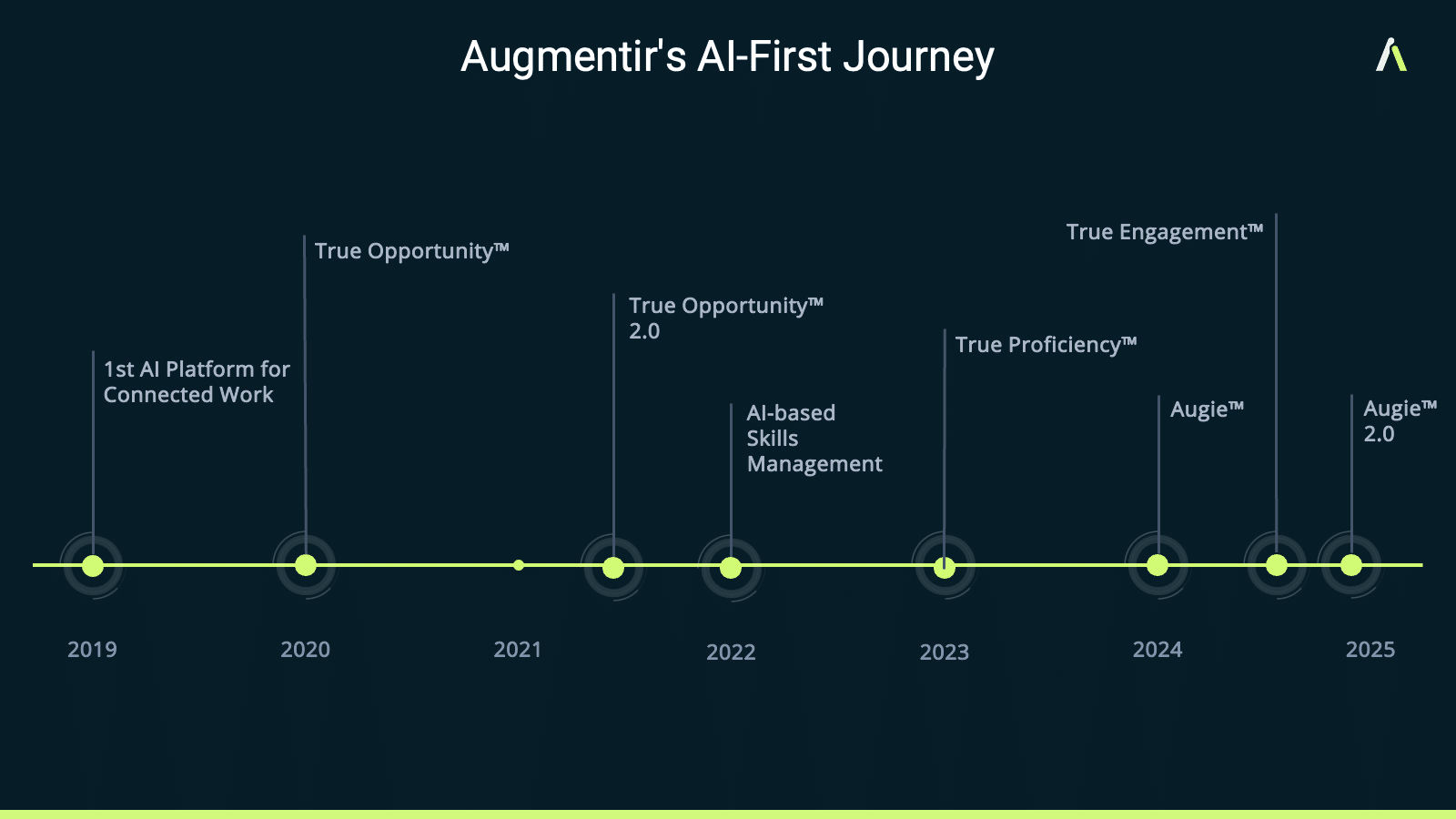
Many manufacturing solutions incorporated AI technology as an add-on or afterthought as the technology gained more advanced capabilities and popularity. We, however, have been championing and building a suite of solutions using AI as a foundation. Our platform was designed from the bottom up with AI capabilities in mind, placing us as a leader in the connected frontline worker field.
- 2019 – Augmentir launched the world’s first AI-first connected platform for manufacturing work empowering frontline workers to perform their jobs with higher quality and increased productivity while driving continuous improvement across the organization. This marked the start of our AI-first journey, giving industrial organizations the ability to digitize human-centric work processes into fully augmented procedures, providing interactive guidance, on-demand training, and remote expert support to improve productivity and quality.
- 2020 – Augmentir unveiled True Opportunity™, the first AI-based workforce metric designed to help improve operational outcomes and frontline worker productivity through our proprietary machine learning algorithms. These algorithms take in frontline worker data, then combine it with other Augmentir and enterprise data to uncover and rank the largest capturable opportunities and then predict the effort required to capture them.
- 2021 – Building on user feedback and field data, Augmentir reveals True Opportunity 2.0™, with improved and enhanced capabilities surrounding workforce development, quantification of work processes, benchmarking, and proficiency. By Leveraging anonymized data from millions of job executions to significantly improve and expand the platform’s ability and automatically deliver in-app AI insights we were able to increase benefits and returns for Augmentir customers.
- 2022 – Augmentir announces the release of True Productivity™ and True Performance™. True Productivity allows industrial organizations to stack rank their largest productivity opportunities across all work processes to focus continuous improvement teams at the highest ROI and True Performance determines the proficiency of every worker at every task or skill enabling truly personalized workforce development investments.
- 2023 – Augmentir launches Augie™ – the GenAI-powered assistant for industrial work. By incorporating the foundational technology underpinning generative AI tools like ChatGPT, we enhanced our already robust offering of AI insights and analytics. Augie adds to this, improving operational efficiency and supporting today’s less experienced frontline workforce through faster problem-solving, proactive insights, and enhanced decision-making.
- 2024 – As this year progresses, we have already continued to refine our AI-first solutions and apply user feedback and additional features to best support frontline industrial activities and workers everywhere.
- 2025 and beyond – True Engagement™, looking forward we predict the evolution of AI in manufacturing activities will continue, progressing until we can accurately measure signals to detect the actual engagement of industrial workers and derive useful information and insights to further enhance both HR and manufacturing processes.
We are deeply involved in applying AI and emerging technologies to manufacturing activities to augment frontline workers, not replace them. Providing enhanced support, access to key knowledge (when and where it does the most good), and improving overall operational efficiency and productivity.
The Future of AI in Manufacturing – The Journey Forward
As we press onward into the future, we at Augmentir are determined to champion the application of AI and smart manufacturing to augment and enhance frontline workers and industrial processes. We will continue to evolve our application of AI and its use cases in manufacturing to help frontline teams and workforces, reinforcing our AI-first pedigree.
The addition of Augie to our existing AI-powered connected worker solution is an important step forward. Augie is a Generative AI assistant that uses enterprise-wide data, provides instant access to relevant information, closes skills gaps with personalized support, offers insights into standard work and skills inventory, and identifies opportunities for continuous improvement. Augie is a result of our dedication to empowering frontline workers, leveraging AI to support manufacturing operations, and giving manufacturing workers better tools to do their jobs safely and more efficiently.
With patented AI-driven insights that digitize and optimize manufacturing workflows, training and development, workforce allocation, and operational excellence, Augmentir is trusted by manufacturing leaders as a industrial transformation partner delivering measurable results across operations. Schedule a live demo today to learn more.

